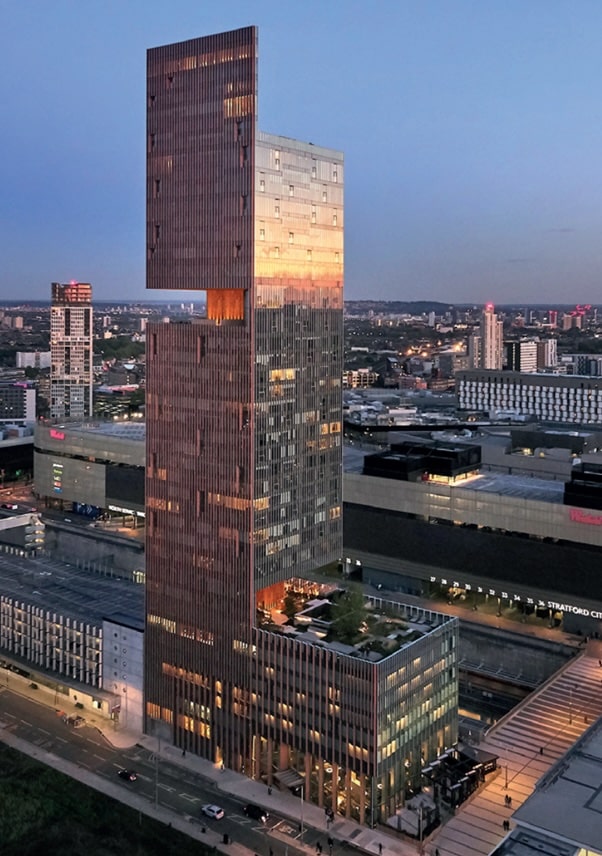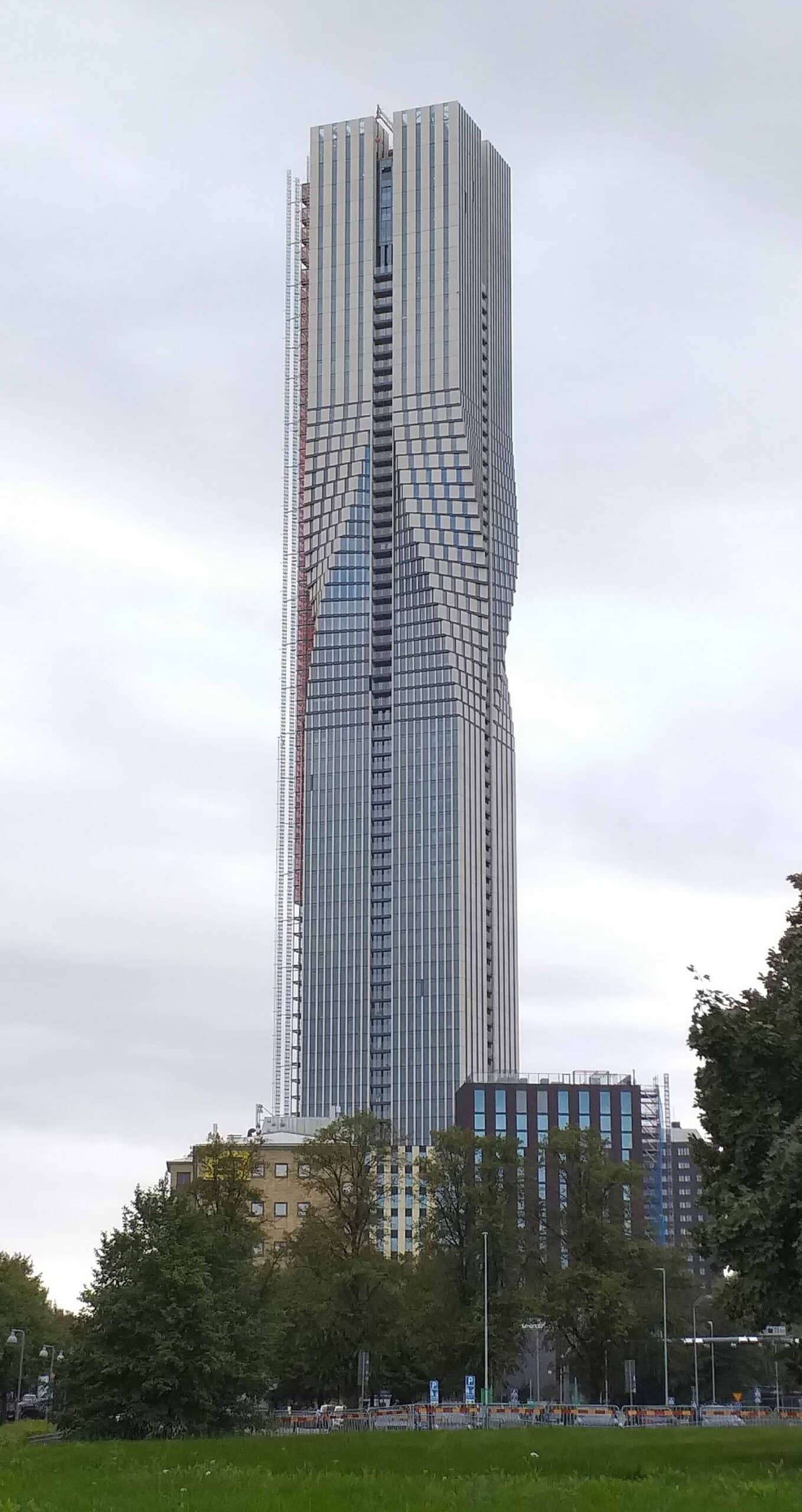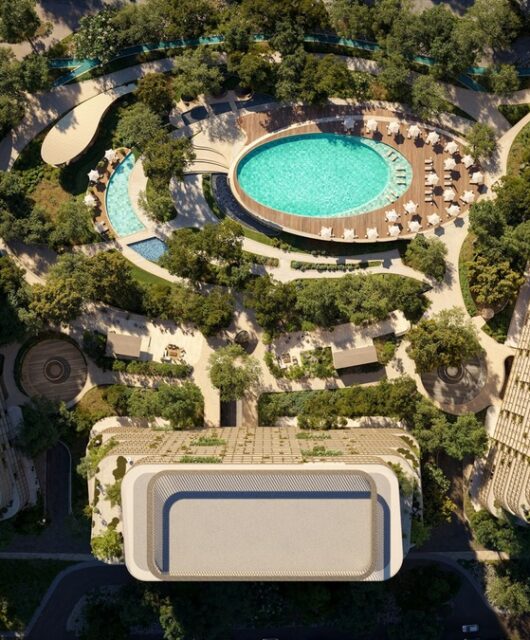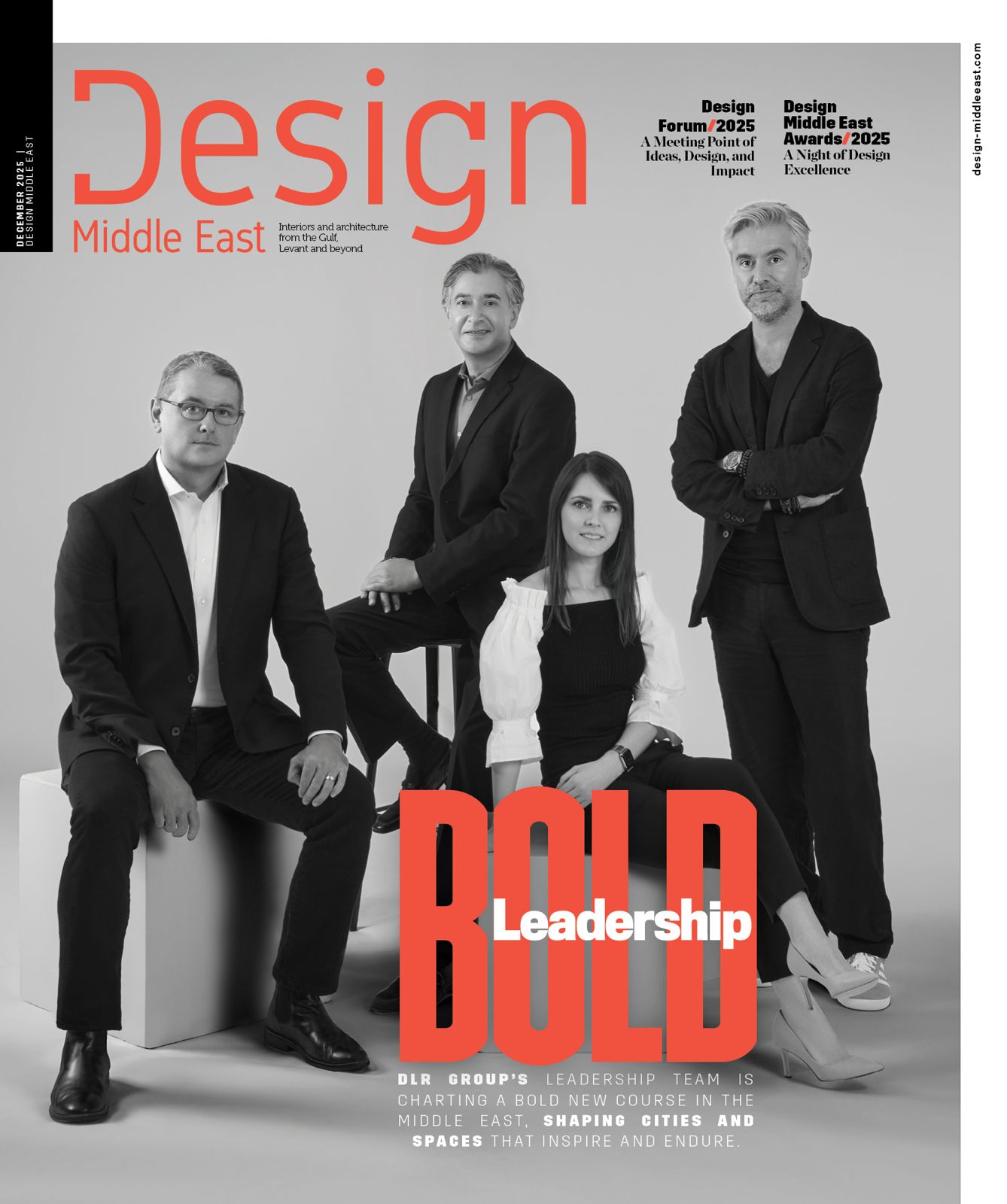
By Roma Arora
Dmitri Jajich, the Global Director, Structures at KPM, is aiming to advance the future of design excellence. His diverse portfolio showcases innovation on all scales.
He is a perfectionist, innovator, and master of structural engineering. A rare talent whose passions blossomed into a remarkable career, he blends academic rigour with degrees in physics and engineering. Meet, Dmitri Jajich, who has joined KPM as the Global Director of Structures, following a distinguished 24-year career at Skidmore, Owings & Merrill (SOM). Dmitri’s wealth of experience serves as a cornerstone for learning across the architectural engineering sectors.
During his tenure at SOM, he contributed to high-profile projects like Dubai’s iconic Burj Khalifa, one of the world’s tallest buildings. Working closely with renowned structural engineer William Baker, Dmitri excelled, in addressing unique challenges. In recognition of his outstanding contributions to the field, Dmitri has been honoured with the esteemed grade of Fellow (FIStructE) by the Institution of Structural Engineers.
Dmitri acknowledges the tough nature of his job. Reflecting on the challenges of the architectural engineering profession, Dmitri observes: “Design is an iterative process, and architects often take one step forward and two steps back, which can frustrate some engineers. However, it’s the most important part of the job, to try out options and compare and contrast the merits of various solutions. We assist architects and clients in understanding the trade-offs between design options—anything is possible in engineering, but everything has a cost. Our goal is to ensure the engineering teams deliver top technical design and be a firm that architects love working with. I believe KPM can be a global leader in providing efficient, elegant, and ambitious engineering designs.”

During his tenure at SOM, Dmitri contributed significantly to high-profile projects like Dubai’s iconic Burj Khalifa, one of the world’s tallest buildings
Ensuring Comfort at Any Height!
His expertise in tall building design, wind engineering, and optimising material usage will greatly benefit the region. His designs prioritise precise structural expression and meticulous detail work. He advocates for using energy-based optimisation methods to minimise material while maximising stiffness, challenging traditional practices for more sustainable solutions.
Dmitri provides a case study for better understanding. He notes that as buildings get taller the performance of the structure in response to wind-induced movements are really important and often overlooked by engineers with limited tall building experience. The now infamous problems with 432 Park Avenue in NY illustrate that ensuring occupants feel comfortable and secure is a critical concern, especially in luxury residential buildings where residents have higher expectations and a tendency to file lawsuits.
“Complying with code requirements does not ensure that a tall building will perform to the occupant’s expectations. A performance-based wind-engineering approach, whereby the client, architect, engineer, and wind tunnel together agree on appropriate acceleration limits and then ‘tune’ a tall tower to the appropriate stiffness will help ensure that a tower is not only safe but also that its occupants will be happy with their homes and the value of their investment. During my time at SOM, I have been fortunate to have worked with some of the best tall building and wind engineers in the world and have a gained lot of experience designing and refining a tall building’s design for wind performance,” shares Dmitri.

On Infinity Tower (Cayan) in Dubai, the helix form presented a challenge in terms of construction and standardising the façade modules. We studied a series of options to realise the twisting frame geometry and determined that for ease of construction and façade installation, stacking vertical columns
and offsetting them in an incremental step-wise manner at each level, with a slope in one direction and an offset over the column below in the other, was the simplest way to structure the building. To simplify This choice required careful detailing of the perimeter frame reinforcement to ensure that the placement of rebar cages was collision-free.
Emerging Trends in the Middle East – Ambitious Architectural Expression
Dmitri observes that “there is no shortage of ambitious, novel building designs, especially in the Middle East,” but that “far fewer projects than are being proposed than actually get built because structural efficiency and constructability are unfortunately often an afterthought. “On the Cayan project in Dubai, we understood we were trying to create a novel and complex concept, and that in order to succeed, we needed to present a structural design that contractors could readily understand and want to build,” shares Dmitri.
Enabling Ambitious Design: Constructability and Cost are Key
Dmitri sees a tendency in Middle Eastern architecture towards more slender luxury residentialconstructions, which frequently incorporate challenging architectural characteristics. “As buildings rise taller, the cost and complexity of the structure can skyrocket if not properly designed and optimised.”
He further explains: On the Stratford project (Manhattan Loft Gardens) in London, we knew we were trying to achieve an unusual and challenging concept and that to be successful we had to put forward a structural design that contractors could easily get their heads around and want to build. The structural design of the Stratford was all about constructability.”
The engineering of The Stratford was of great interest and a paper about its structural design and construction by Dmitri and his colleague won an IStructE award.

The engineering of The Stratford was of great interest and a paper about its structural design
and construction by Dmitri and his colleague won an IStructE award. Transferring out half the building’s columns to create a triple-storey height space required large outriggers extending from the central
core. Building the outriggers in a conventional manner would have required disassembling the
jump form and delaying construction by several months, making the project financially untenable.
Instead, SOM engineers under Dmitri’s leadership, left out large portions of the corners
of the core walls and allowed the jump form to continue progressing upward while construction
of the outriggers proceeded simultaneously.
Scandinavia’s Tallest Tower- Karlatornet
Dmitri has a tremendous portfolio, having worked on some of the world’s largest skyscrapers, including the Burj Khalifa and Karlatornet. He claims that designing for buildability is particularly important to him and that he strives to ensure that structures are simple and fast to construct. “On Karlatornet, we realised the sinuous twisting shape with simple incremental translations of the straight lines of the slab edges—there are no curves anywhere in the structure; all the columns are vertical. The shifting geometry was described with just two orthogonal dimensions on each floor plan. We ensured that the construction was no more complex or time-consuming than for a conventional rectangular tower.”
Sustainable Structural Engineering Solutions
Sustainability is a critical aspect of modern engineering. Dmitri emphasises the growing importance of minimising embodied carbon in engineering design, enabling structural engineers to push boundaries while remaining environmentally conscious.
Dmitri explains in detail: “There is a big push to reduce the embodied carbon in structures; as structural engineers, we can employ several methods to minimise the amount of concrete in a structure: we can distribute the material in a structure at the location in the building where it does the maximum good to minimise deflections, reducing and while increasing stiffness. As much as two-thirds to one half of the concrete in a tall tower is in the floor slabs, so we need to target the floor structures to eliminate unnecessary concrete and work with Architects from day 1 of a project to establish a regular grid that allows the thinnest possible floor structure. Using post-tensioning can save 20-25% of the cement and mass on each floor. To go beyond that we need to start introducing voids through the use of hollow-core planks, or substituting portions of the slab for hybrid timber or other materials. A floor slab works the same whether it is on the 2nd floor of a 3-storey building or on the 100th floor so slab optimisation is applicable to buildings of all scales. We’re not yet to the point where we can employ cement-free concrete for structural applications, but we’re seeing a lot of progress in cement alternatives and I expect that we’ll be using more of them, especially in slabs in the coming years.”

In contemporary architectural and engineering practices, especially in a bustling metropolis like London, the assessment and utilisation of existing structures have become a crucial component of project planning and development. Dmitri, with his extensive experience in the field, highlights the importance of this trend and its implications for the industry. Dmitri says that “In response to the climate crisis, developers and architects in the UK are increasingly needing to justify the decision to demolish existing buildings and demonstrate they have studied alternatives to complete rebuild. Most projects in London are now carrying out careful analysis of the existing structure to determine the extent to which it can support additional floors or be incorporated into a new structure. We typically find that older buildings inherently have a surprising amount of additional capacity and several new floors of light(er) weight steel and/or timber construction can be added. Interfacing new and old construction can be more time-consuming than working from a clean slate, but very satisfying for engineers as it involves careful consideration of details and constructability. Even with buildings that are no longer fit for purpose, we’re pushing to reuse existing foundations and basements, at the very least. This is a very positive trend and offers new opportunities for sensitive structural engineering design that helps address the climate crisis.”

Azizi Venice- Dubai’s Next Legacy
Dmitri follows a disciplined approach to his work. He is committed to grasping KPM’s engineering process by carefully examining previous and ongoing projects. Dmitri explains: “I plan to review past and ongoing KPM projects to gain insights into the company’s portfolio and engineering methods. With Azizi Venice just getting started, this is a fantastic moment for me to provide some feedback on the project’s unique issues, offer my approach, and begin to truly grasp how the engineering team works and assist drive the design solution. The greatest way to get to know people and to learn is to participate together on a meaningful project, and this appears to be perfect timing.”
Dmitri is enthusiastic about the Azizi Venice project, as this incredible opportunity will allow him to showcase his abilities and interact with a wide range of professionals across various industries. Dmitri goes on to express his excitement and discuss the technical aspects of the Azizi Venice project: “On Azizi Venice (plot ppw) which consists of 10 buildings over three common basement levels surrounded by a man-made lagoon will create the feel of Venice through the whole development. The Ground floor consists of a big lagoon area positioned above the basement-1 slab, connected to all the buildings. The presence of water presents a significant challenge in consideration of movement joints. The structural slab in this zone shall be designed to support the water load using crack width criteria and temperature loads. The buildings feature a rooftop pool and amenity areas. The buildings shall be designed to accommodate this excess load on the top floor taking into consideration the building’s behaviour under lateral loads.”

Dmitri’s extensive experience serves as a compelling case study and a resource for professionals across the architectural and engineering spectrum. His insights and practices offer significant guidance for architects, designers, engineers, MEP consultants, landscape experts, and others involved in the construction and design industry. As he embarks on his journey with KPM, his methodologies will undoubtedly become a reference point for many. His work will serve as a guiding framework for current and future professionals, ensuring that the principles of thoughtful, sustainable, and efficient design continue to shape the built environment.







